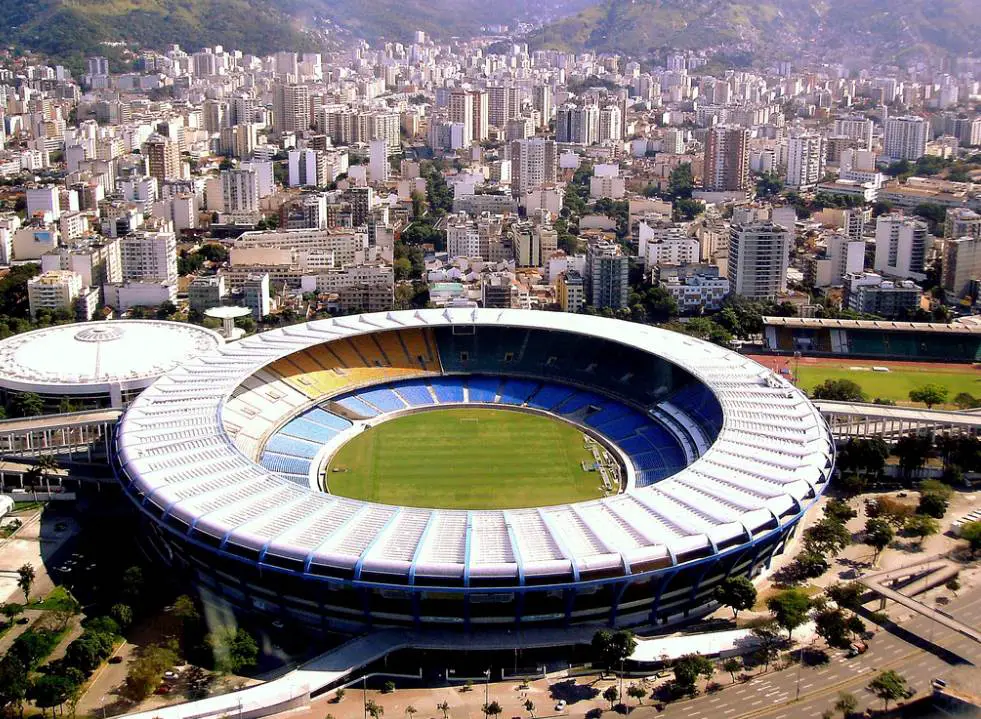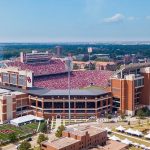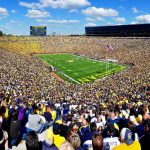If you have one vote to pick the most iconic stadium in the world, this famous stadium in Brazil will surely qualify for the title.
Although it’s far from being the biggest stadium in the world today, it still holds a fascinating record that will never be broken.
Let’s take a closer look at some of the most interesting facts about the Maracanã Stadium in Rio de Janeiro, one of the most extraordinary sports temples ever constructed.
1. It’s located in a neighborhood with the same name in central Rio
The Maracanã Stadium is the common name of a stadium officially known as the “Estádio Jornalista Mário Filho.”
The official name is a reference to the Brazilian writer and journalist Mário Filho who passed away in 1966.
This might change as it has been suggested to rename the stadium “Edson Arantes do Nascimento – Rei Pele stadium,” in honor of legendary Brazilian football player Pele.
Most people simply call it the “Maracanã” and that’s a reference to the neighborhood of Rio it’s located in. This district is in turn named after the river with the same name that flows through it.
Apart from this amazing association football stadium, there are several other sports venues inside the complex.
The “Ginásio do Maracanãzinho” or “Little Maracanã” is an indoor arena and there’s a swimming complex right next to it as well.
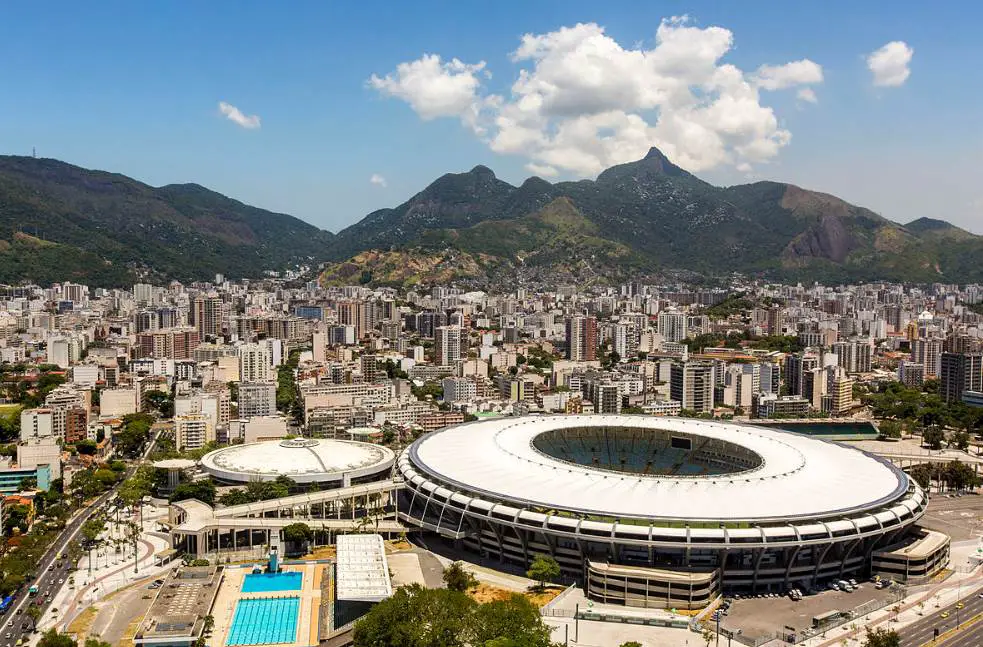
2. It was constructed as the main venue of the 1950 FIFA World Cup
Brazil won the bid to host the 1950 FIFA World Cup so a new stadium had to be constructed to serve as the main venue of this tournament.
After some arguments, the current location was chosen, a place that was occupied by a tennis complex at the time.
The cornerstone of the monumental new stadium was only laid on August 2, 1948, less than 2 years before the opening game of the world cup was played.
About 1,500 construction workers worked day and night the first year. When the final months approached, up to 2,000 people were involved in the construction.
Regardless of this enormous workforce, the stadium was incompleted when the tournament started. It still took until 1965 before the stadium was complete, 15 years after the World Cup had finished.
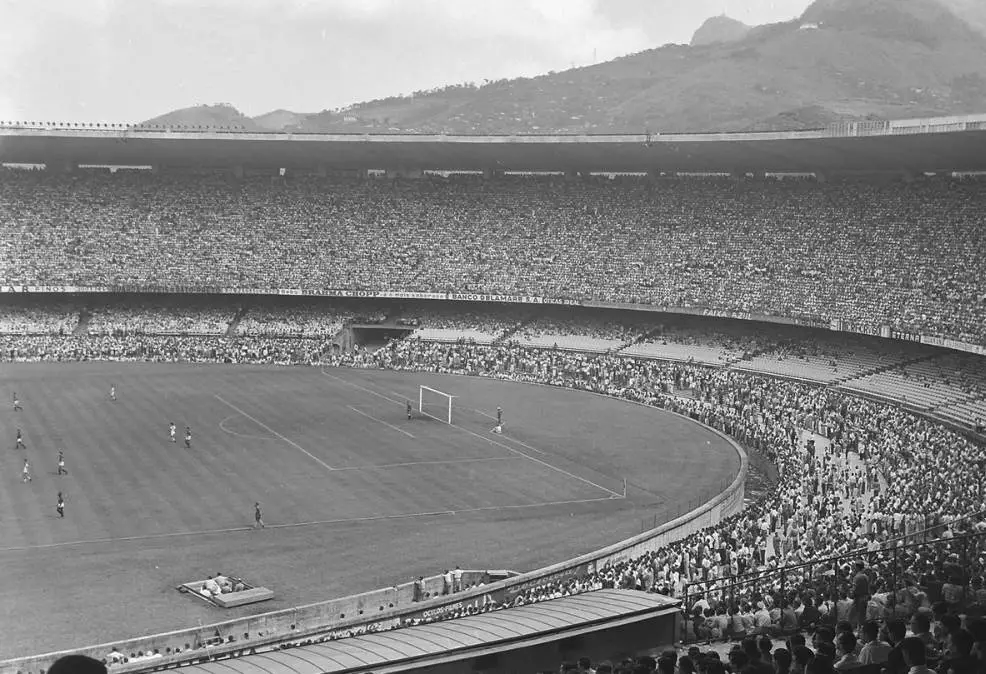
3. It still holds the attendance record set at the FIFA 1950 World Cup Final
The exact capacity of the Maracanã Stadium remained a source of discussion and a wide range of estimates were floating around.
In Brazil, claims that the stadium could seat over 200,000 spectators were being published.
The Guinness Book of World Records published an estimate of 180,000, and other sources claimed it could seat 155,000 people. Either way, the stadium became the biggest in the world.
It surpassed Hampden Park in Glasgow, still one of the biggest stadiums in Scotland today, by quite some distance.
Regardless of the estimated numbers, the 1950 FIFA World Cup Final was played on July 16, 1950, and had an official attendance of 199,854 spectators. Unfortunately, Brazil lost 2-1 against Uruguay.
Equally staggering numbers are the facts that the stadium saw crowds of over 150,000 spectators 26 times, and over 100,000 sepctators 284 times in its history.
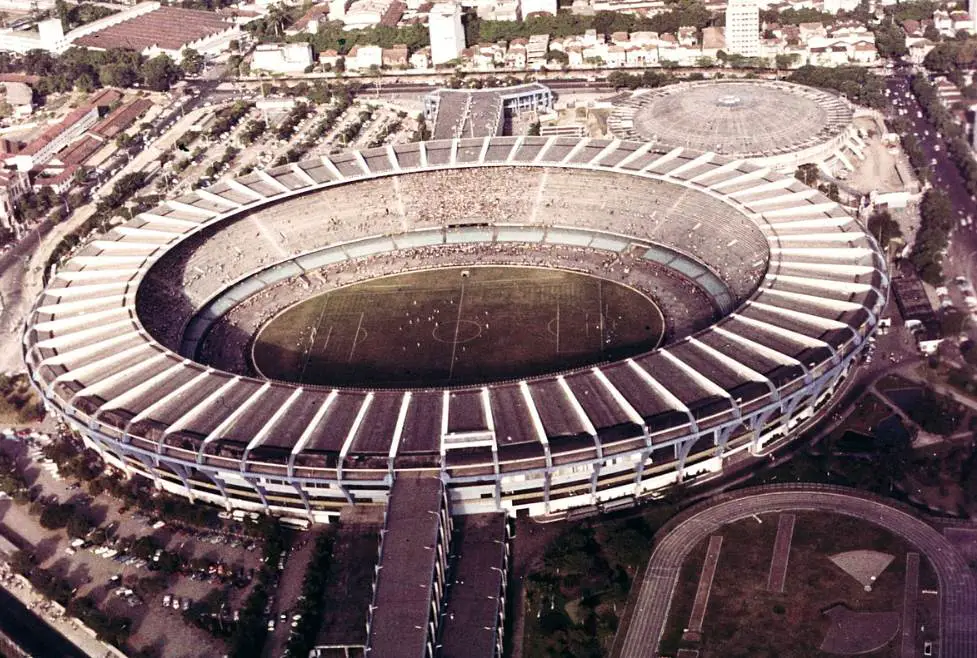
4. The stadium was converted into an all-seater in the late 1990s
The attendance record will never be surpassed, especially because of the severe security measures that significantly reduced the capacity of stadiums all around the world.
The same applied for the Maracanã Stadium which was converted into an all-seater stadium in the late 1990s.
A game between Botafogo and Flamengo in the Brazilian competition resulted in a tragedy in 1992 when part of the stands collapsed and 3 spectators were killed and 50 wounded.
The configuration remained the same between 1950 and 2010, except for the fact that colorful seats were installed on all terraces of the two-tier bowl.
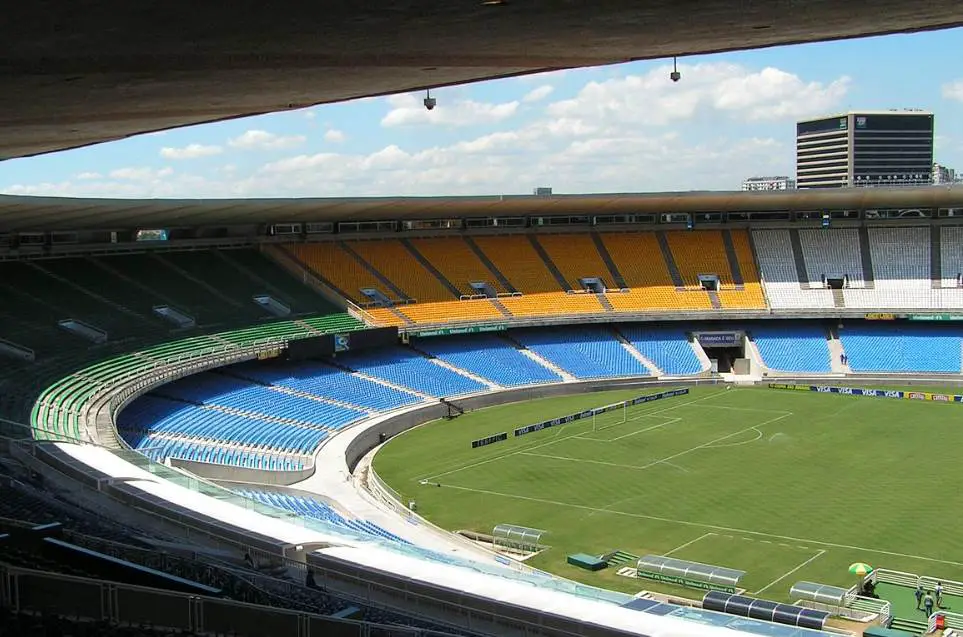
5. The final renovation took place for another FIFA World Cup in 2014
As the biggest stadium in Brazil, the stadium was scheduled to host both the final of the 2014 FIFA World Cup and was renovated for this special occasion.
The terraces of the two-tier bowl were commpeltel demolished and the stadium was transformed into a one-tier bowl.
This project was completed between 2010 and 2013 and it further reduced the capacity of the stadium to 78,838 seats.
Home country Brazil didn’t play a single match at the stadium after their traumatic 1-7 defeat at the Estádio Mineirão in Belo Horizonte.
Germany eventually won the World Cup by defeating Argentina 1-0 after extra time at the Maracanã.

More interesting facts about the Maracanã Stadium
6. The construction of the stadium in the late 1940s was delayed several times due to a dispute about the location. Because of the writings of journalist Mário Filho it was eventually constructed in it current location.
This is the reason why the stadium was renamed in his honor, the Estádio Jornalista Mário Filho, a year after it was finally completed in 1966.
7. The stadium has been used by several local football clubs throughout its history. These include Flamengo, Fluminense, Botafogo, and Vasco da Gama.
Today, only Flamnego and Fluminense call the Maracanã their home stadium. The stadium is also frequently used by the Brazilian national football team.
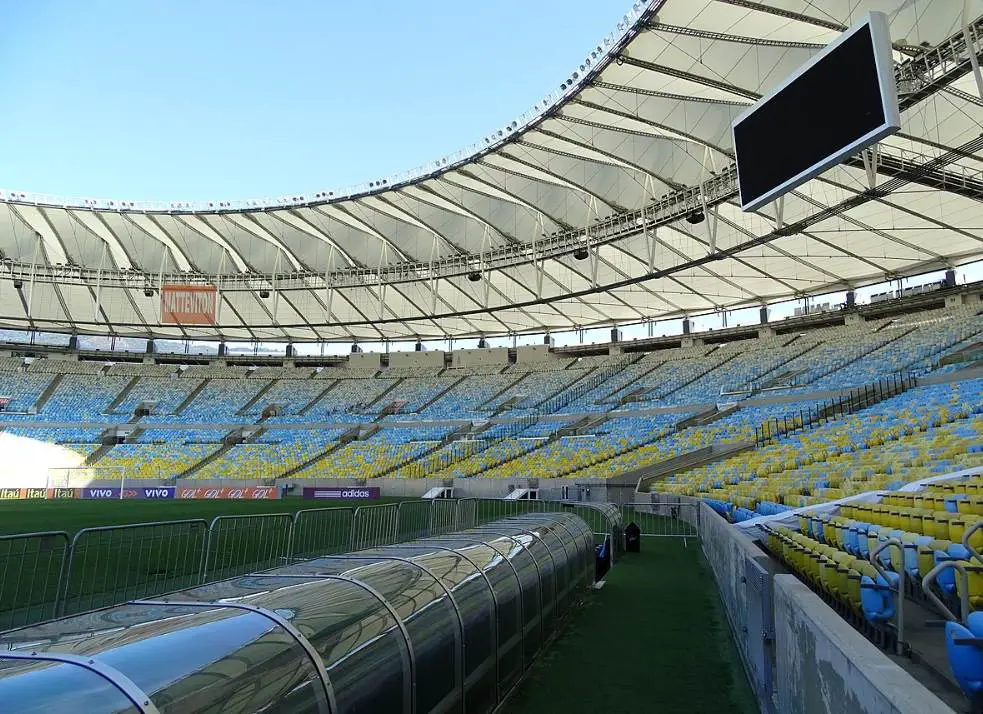
8. The stadium was the main venue of the football games during the 2016 Summer Olympics. Both the men’s and the women’s gold medal games were played here.
Germany won the women’s tournament by 2-1 against Sweden. Brazil won the men’s game with 5-4 after penalties against Germany after the game had ended in a 1-1 draw.
9. The Red Star Stadium of Red Star Belgrade in Serbia is commonly referred to as the “Marakana.” This is a reference to the Maracanã in Rio de Janeiro which it resembles.
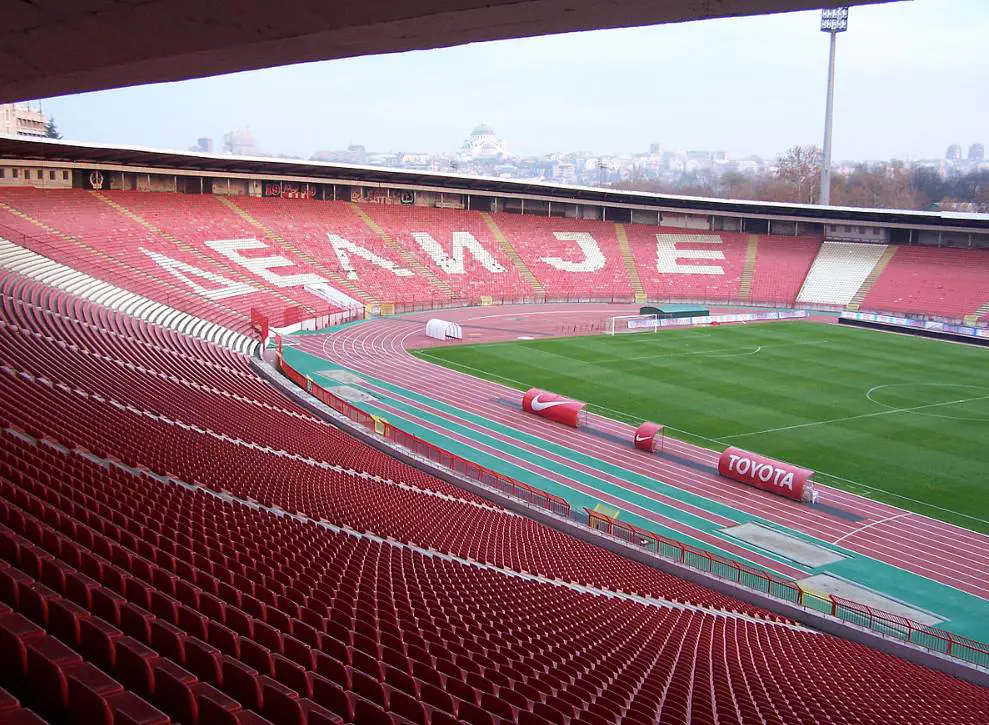
10. The stadium might be renamed after legendary Brazilian football player Pele, a man who scored his 1,000th career goal at the stadium in 1969.
11. Pele scored his 1,000th goal at the stadium, but another famous Brazilian football player holds the record for most goals scored at the Maracanã. Zico scored his final goal for Flamengo in 1989, bringing his total of goals scored here to 333, a stunning figure.
12. The renovation project completed in 2013 for the 2014 FIFA World Cup also included the replacement of the entire roof.
The former roof only covered some parts of the upper section of the stadium while the new roof covers about 95% of the seats.
